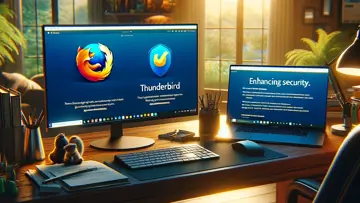Microsoft .NET Framework 2.0: An In-Depth Review of Its Features and Performance
Microsoft .NET Framework 2.0 is a comprehensive software development platform that serves as a core component for building, deploying, and running applications on Windows. As an incremental update over its predecessor, .NET Framework 1.1, version 2.0 introduces numerous enhancements aimed at improving developer productivity, application performance, and the overall security landscape.
The framework provides a robust environment for developing Windows-based applications and web services using languages like C#, VB.NET, and F#. Key features include the introduction of the Common Language Runtime (CLR) version 2.0, improved garbage collection, and support for multiple programming languages under the Common Language Infrastructure (CLI) standards.
Core Features and Improvements
- Enhanced Language Support: The release expands language interoperability, enabling developers to create applications that are easier to maintain and extend through improved compiler features.
- Base Class Library (BCL): The framework enhances its extensive library with new classes, methods, and interfaces that simplify common programming tasks such as file I/O, string management, data access, and XML processing.
- Windows Forms: Offers advanced tools for developing user interfaces with improved rendering performance and support for custom controls.
- ASP.NET: Significant updates to the ASP.NET engine facilitate more productive web development with features like Master Pages, themes, skins, and enhanced data controls.
- Foundation for Web Services: The introduction of the System.ServiceModel namespace and Windows Communication Foundation (WCF) support allows developers to build secure, reliable web services that can communicate over various protocols.
- Configuration Management: Simplified mechanisms for managing application settings enhance deployment flexibility.
Performance and Security Enhancements
The .NET Framework 2.0 improves application performance through optimized Just-In-Time (JIT) compilation and enhanced memory management. The framework's security model is fortified with updated Code Access Security (CAS) policies and stronger cryptography support, providing developers with better tools to secure their applications against threats.
Compatibility and Deployment
The compatibility of applications developed using .NET Framework 2.0 is broadly maintained with earlier versions, easing integration into existing systems. Deployment can be streamlined through setup projects that utilize ClickOnce technology or MSI installers, simplifying updates and user installations.
Development Tools Integration
.NET Framework 2.0 seamlessly integrates with Microsoft's development environments such as Visual Studio 2005, delivering powerful debugging, profiling, and code analysis tools. This tight integration accelerates the development lifecycle and enhances code quality.
Community Support and Resources
The release benefits from extensive community resources including official documentation, tutorials, forums, and third-party libraries. Microsoft’s support channels offer ongoing assistance for troubleshooting issues or implementing complex functionalities.
System Requirements
Running .NET Framework 2.0 requires a Windows operating system compatible with Windows XP SP2, Windows Server 2003 SP1 or later versions. Adequate hardware specifications include a minimum of 128 MB RAM (256 MB recommended) and sufficient disk space for the installation package plus runtime components.
Conclusion
The Microsoft .NET Framework 2.0 marks a significant milestone in Microsoft's developer platform history by offering versatile features that foster application robustness and security. Its extensive library support combined with improved developer tools establishes it as a vital component for enterprise-level software development on Windows environments.
Visão geral
_Microsoft .NET Framework 2 é um software Comercial na categoria Desenvolvimento desenvolvido pela ® 2006 Microsoft Corporation.
Os usuários do nosso aplicativo cliente UpdateStar verificaram _Microsoft .NET Framework 2 atualizações 63 vezes durante o último mês.
A versão mais recente de _Microsoft .NET Framework 2 é atualmente desconhecida. Inicialmente foi adicionado ao nosso banco de dados em 15/09/2008.
_Microsoft .NET Framework 2 é executado nos seguintes sistemas operacionais: Windows.
_Microsoft .NET Framework 2 não tem sido avaliado pelos nossos utilizadores ainda.
Instalações
Últimas revisões
|
|
Ashampoo Burning Studio
Software de gravação de CD e DVD fácil de usar |
|
|
Microsoft Visual C++ 2015 Redistributable Package
Aumente o desempenho do seu sistema com o Microsoft Visual C++ 2015 Redistributable Package! |
|
|
Nero Info
Mantenha-se informado com o Nero Info! |
|
|
ZipX
Compactação eficiente de arquivos com ZipX by WinX Software |
|
|
Kaspersky Password Manager
Proteja suas senhas com o Kaspersky Password Manager! |
|
|
Wondershare Filmora
Transforme seus vídeos em obras-primas cinematográficas com o Wondershare Filmora! |
|
|
UpdateStar Premium Edition
Manter seu software atualizado nunca foi tão fácil com o UpdateStar Premium Edition! |
|
|
Microsoft Edge
Um novo padrão na navegação na Web |
|
|
Google Chrome
Navegador da Web rápido e versátil |
|
|
Microsoft Visual C++ 2015 Redistributable Package
Aumente o desempenho do seu sistema com o Microsoft Visual C++ 2015 Redistributable Package! |
|
|
Microsoft Visual C++ 2010 Redistributable
Componente essencial para executar aplicativos do Visual C++ |
|
|
Microsoft OneDrive
Simplifique o gerenciamento de arquivos com o Microsoft OneDrive |





